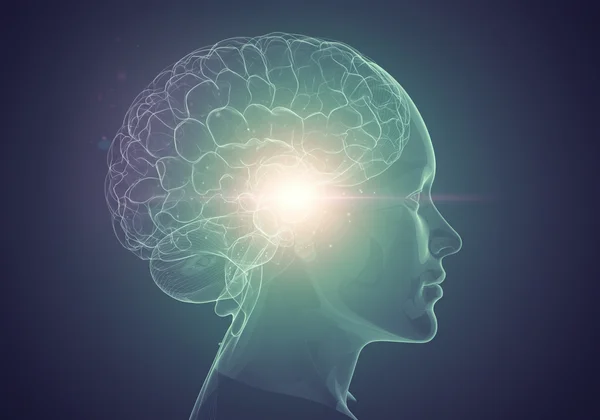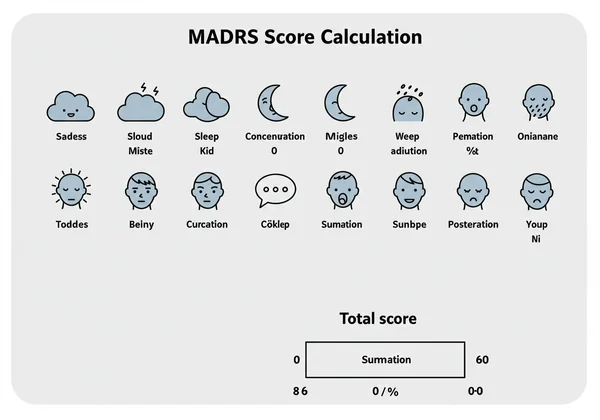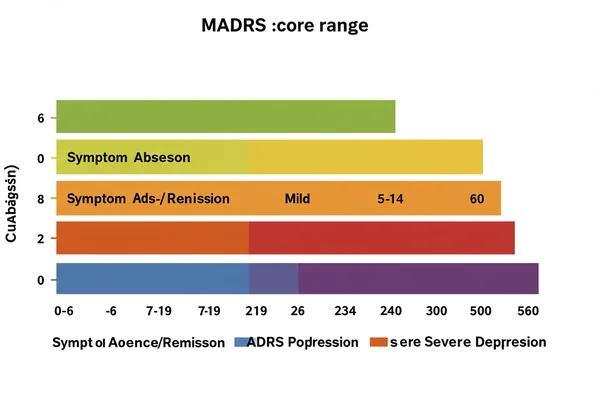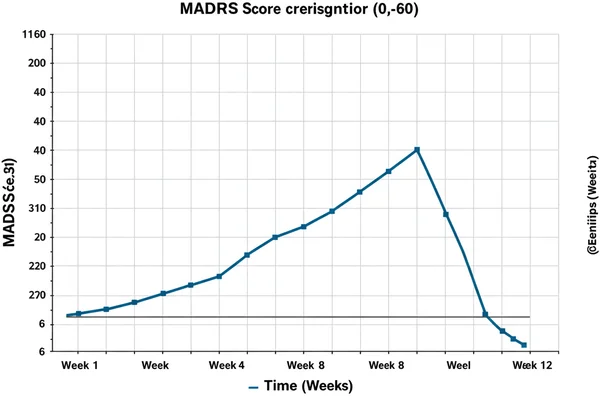MADRS Score Interpretation: What Your Results Mean
Curious about your MADRS score interpretation? Understanding what your results mean is a vital step in monitoring your mental well-being. This guide will walk you through what your score signifies, from mild to severe depression, and how the Montgomery-Åsberg Depression Rating Scale (MADRS) is utilized in assessing depression. If you're ready to get an accurate assessment, you can take the MADRS test on our platform right now.

Understanding the Montgomery-Åsberg Depression Rating Scale (MADRS)
The MADRS Scale is a widely recognized and respected tool in mental health. Developed by Swedish psychiatrists C. Montgomery and S. Åsberg in 1979, it has become a gold standard for quantifying the severity of depressive symptoms. Unlike broader diagnostic questionnaires, this scale focuses specifically on the core symptoms of depression, making it highly sensitive to changes over time, which is invaluable for tracking treatment efficacy.
What is the MADRS Score and How is it Calculated?
The MADRS score is derived from a structured assessment of 10 key symptoms of depression. These include apparent sadness, reported sadness, inner tension, reduced sleep, reduced appetite, concentration difficulties, lassitude, inability to feel, pessimistic thoughts, and suicidal thoughts. Each symptom is rated on a 0-6 scale, where 0 indicates no symptom and 6 indicates a severe symptom. The scores are then summed, resulting in a total score that can range from 0 to 60. A higher score indicates greater severity of depressive symptoms. The calculation is straightforward, providing an instant and reliable metric.

Why this is a Trusted Clinical Tool
This assessment has earned its reputation as a clinical tool due to its robust psychometric properties, including high reliability and validity across numerous studies and diverse populations. It is particularly valued for its sensitivity to change, meaning it can accurately reflect improvements or deteriorations in a patient's condition, making it indispensable for monitoring the effectiveness of antidepressant treatments or other interventions. Mental health professionals worldwide rely on it for its precision and consistency in assessing depression severity.
Deciphering Your MADRS Score: Key Interpretation Ranges
Understanding your MADRS score meaning is vital for both personal insight and clinical management. The total score falls into specific ranges, each correlating with a different level of depression severity.
Score Meaning: Understanding Severity Levels
Generally, the severity indicated by this scale is categorized as follows:
- 0-6: Symptom Absence/Remission – Indicates no or very minimal depressive symptoms.
- 7-19: Mild Depression – Suggests a mild level of depressive symptoms. While not severe, it may still warrant attention and discussion with a healthcare professional.
- 20-34: Moderate Depression – Points to a moderate level of depression, often requiring clinical intervention and support.
- 35-60: Severe Depression – Signifies severe depressive symptoms, necessitating immediate professional help and intensive treatment.
Remember, these ranges serve as guidelines. Individual experiences can vary, and a diagnosis should always be made by a qualified healthcare provider.

Score Ranges and Their Clinical Significance
Each scoring range carries significant clinical implications. For example, a score in the moderate to severe range typically prompts clinicians to consider specific therapeutic approaches, medication, or a combination. For individuals tracking their own progress, seeing a score move from a higher to a lower range can be a positive indicator of improvement, either from self-care strategies or professional treatment. Our platform offers a seamless way to track your progress over time.
Is There a "Normal" MADRS Score?
A common question many people have is, what is a normal MADRS score? The concept of "normal" when discussing mental health scores can be complex, as it refers to a state free from depressive symptoms.
Baseline Scores and Healthy Ranges
A "normal" or healthy score is generally considered to be in the 0-6 range, indicating the absence of significant depressive symptoms or that an individual is in remission from depression. This baseline helps both individuals and professionals gauge progress. If you're just starting your journey to understand your mental health, taking a baseline assessment can be very informative. You can easily start your assessment online.
Individual Variability and What Influences Your Score
Consider the nuances of MADRS self-assessment. Many factors can influence a person's score, including current life circumstances, stress levels, physical health, and the presence of other mental or physical conditions. A single score is a snapshot in time; consistency and trends are often more telling than isolated results. Therefore, regular monitoring is often recommended to understand the trajectory of symptoms.
MADRS Scores in Practice: Monitoring & Professional Use
The utility of this scale for depression extends beyond initial assessment. It is a powerful tool for ongoing monitoring and professional clinical practice.
Tracking Changes: Using this Scale to Monitor Treatment Efficacy
One of the most significant applications of this scale is its ability to monitor treatment efficacy. By regularly completing the assessment, individuals and their healthcare providers can observe changes in the score, providing objective data on whether a particular treatment plan is effective. A declining score typically indicates improvement, while a stable or increasing score might suggest a need to adjust treatment strategies. Our platform simplifies this process, allowing you to easily monitor your scores and track changes.

When to Seek Professional Guidance Based on Your Score
While this tool provides valuable insights, it is an assessment tool, not a diagnostic one. If your score interpretation indicates mild, moderate, or severe symptoms, or if you are concerned about your mental health, it is always recommended to seek professional consultation. Our online platform emphasizes this by offering an optional AI-driven personalized analysis report to provide valuable insights, but always encourages consultation with a healthcare provider.
Empowering Yourself with Score Knowledge
Gaining insight from your MADRS score is a powerful step towards better mental health management. Whether you are a healthcare professional seeking an efficient assessment tool or an individual looking to self-monitor your emotional well-being, this scale provides objective and actionable data.
Our website offers an authoritative and easy-to-access online assessment tool. You can receive your reliable MADRS score instantly and even opt for an AI-driven personalized deep analysis report to gain deeper insights into your strengths, challenges, and potential next steps. This unique feature translates raw scores into meaningful, actionable information.
We encourage you to take your free MADRS assessment today. Empower yourself with knowledge and take an active role in your mental health journey.
Frequently Asked Questions About MADRS Score Interpretation
How do you interpret scores?
Scores are interpreted based on predefined ranges that correlate with the severity of depressive symptoms. Generally, scores 0-6 indicate absence of symptoms/remission, 7-19 suggest mild depression, 20-34 point to moderate depression, and 35-60 signify severe depression. A higher score always means greater symptom severity.
What is a normal MADRS score?
A normal MADRS score is typically considered to be in the range of 0 to 6. This indicates that an individual is experiencing minimal to no depressive symptoms, or is in a state of remission. It serves as a baseline for healthy mental well-being concerning the symptoms assessed by the scale.
Is the test free?
Yes, the core test is free on our platform. You can complete the 10 questions and receive your instant score without any cost. There is an optional, paid upgrade to unlock a comprehensive AI-driven personalized analysis report for deeper insights. Access the free test now.
Can I use this for self-assessment?
Yes, you can use this scale for self-assessment to gain insights into your mood and symptom severity. However, it's crucial to remember that self-assessment tools, including this scale, are for informational purposes only and cannot replace a professional medical diagnosis. Always consult a qualified healthcare provider for a clinical assessment and treatment plan.
How accurate is this scale?
This scale is highly accurate as a clinical tool for assessing and monitoring the severity of depressive symptoms. It is widely regarded as a "gold standard" due to its proven reliability, validity, and sensitivity to change in clinical trials and practice worldwide. Its precision makes it a trusted measure for mental health professionals and researchers.